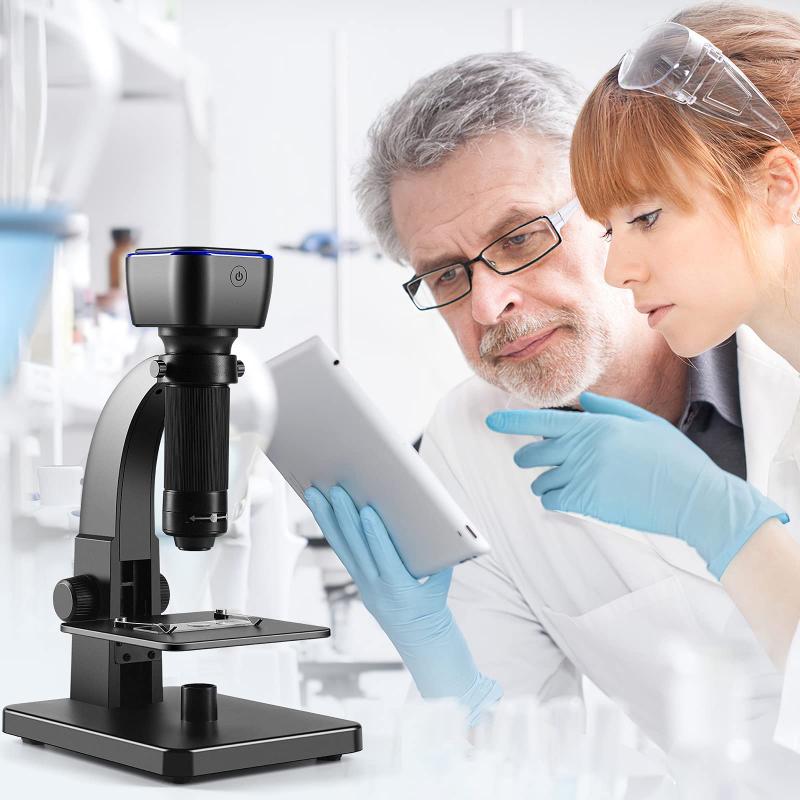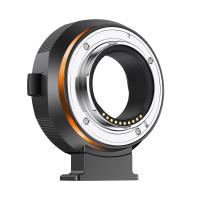What Does Chloroplast Look Like Under A Microscope ?
Under a microscope, chloroplasts appear as small, green, oval-shaped structures within plant cells. They have a double membrane and contain a green pigment called chlorophyll, which gives them their characteristic color. Chloroplasts also have a unique internal structure consisting of stacks of membranous structures called thylakoids, which are interconnected to form a network called the grana. The grana are surrounded by a fluid-filled region called the stroma. The presence of chloroplasts is one of the defining features of plant cells and is responsible for their ability to carry out photosynthesis, the process by which plants convert sunlight into energy.
1、 Chloroplast structure and organization in plant cells
Under a microscope, chloroplasts appear as small, oval-shaped structures within plant cells. They are typically green in color due to the presence of chlorophyll, the pigment responsible for photosynthesis. The size and shape of chloroplasts can vary depending on the plant species and the stage of development.
Chloroplasts have a unique structure and organization that allows them to carry out photosynthesis efficiently. They are surrounded by a double membrane, with the inner membrane forming a series of folds called thylakoids. These thylakoids are stacked on top of each other to form grana, which are interconnected by stroma lamellae. The grana and stroma lamellae together make up the chloroplast's internal membrane system.
Within the thylakoid membranes, chlorophyll molecules are embedded along with other pigments and proteins. These pigments absorb light energy, which is then used to drive the process of photosynthesis. The stroma, which is the fluid-filled space surrounding the thylakoids, contains enzymes and other molecules necessary for the synthesis of carbohydrates.
Recent research has shed light on the dynamic nature of chloroplasts. It is now known that chloroplasts can change their shape and position within the cell in response to environmental cues. They can also undergo division and fusion events, allowing for the redistribution of chloroplasts within the plant cell.
In conclusion, under a microscope, chloroplasts appear as small, green oval-shaped structures with a complex internal membrane system. Their structure and organization enable them to efficiently carry out photosynthesis, and recent research has revealed their dynamic nature within plant cells.

2、 Ultrastructure of chloroplasts revealed by electron microscopy
Under a microscope, chloroplasts appear as small, oval-shaped structures with a double membrane. They are typically around 2 to 10 micrometers in length and 1 to 3 micrometers in width. The outer membrane of the chloroplast is smooth, while the inner membrane is folded into numerous flattened sacs called thylakoids. These thylakoids are arranged in stacks called grana, which are interconnected by thin tubules known as stroma lamellae.
Within the thylakoid membranes, pigments such as chlorophyll are embedded, giving chloroplasts their green color. These pigments are responsible for capturing light energy during photosynthesis. The thylakoid membranes also contain various protein complexes involved in the light-dependent reactions of photosynthesis, including photosystems I and II, cytochrome b6f complex, and ATP synthase.
The stroma, which fills the space between the thylakoid membranes, contains enzymes and other molecules necessary for the light-independent reactions of photosynthesis, also known as the Calvin cycle. It is a dense, gel-like substance that surrounds the thylakoid stacks.
Recent advancements in electron microscopy have provided more detailed insights into the ultrastructure of chloroplasts. High-resolution imaging techniques have revealed the intricate arrangement of thylakoid membranes within the grana, showing a highly organized and interconnected network. Additionally, studies have shown that the thylakoid membranes are not uniformly flat but have a curved shape, which may enhance their efficiency in capturing light energy.
Overall, the ultrastructure of chloroplasts, as revealed by electron microscopy, highlights the complex organization and specialized compartments within these organelles that enable them to carry out photosynthesis efficiently.

3、 Morphological features of chloroplasts observed under light microscopy
Under a light microscope, chloroplasts appear as small, oval-shaped structures within plant cells. They are typically green in color due to the presence of chlorophyll, the pigment responsible for photosynthesis. The size and shape of chloroplasts can vary depending on the plant species and the stage of development.
When observed under higher magnification, chloroplasts exhibit distinct morphological features. They are enclosed by a double membrane, known as the chloroplast envelope, which separates the chloroplast's internal structures from the surrounding cytoplasm. The inner membrane of the envelope is folded into numerous extensions called thylakoids, which form stacks known as grana. These thylakoid membranes contain the photosynthetic pigments and are the sites where light energy is captured and converted into chemical energy.
Within the chloroplast, there is a gel-like substance called stroma, which surrounds the thylakoid membranes. The stroma contains various enzymes and molecules necessary for the synthesis of carbohydrates during photosynthesis. Additionally, chloroplasts may contain small, circular DNA molecules and ribosomes, which are involved in the production of proteins required for chloroplast function.
It is important to note that recent advancements in microscopy techniques, such as confocal microscopy and electron microscopy, have provided more detailed insights into the structure and organization of chloroplasts. These techniques have revealed the intricate arrangement of thylakoid membranes within the grana stacks and the presence of specialized protein complexes involved in photosynthesis. Furthermore, studies have shown that chloroplasts are not static structures but can undergo dynamic changes in response to environmental cues, such as light intensity and nutrient availability.
In conclusion, under a light microscope, chloroplasts appear as green, oval-shaped structures with distinct morphological features. However, more advanced microscopy techniques have allowed for a deeper understanding of the complex organization and dynamics of chloroplasts, shedding light on their crucial role in photosynthesis.

4、 Staining techniques for visualizing chloroplasts in microscopic examination
Under a microscope, chloroplasts appear as small, oval-shaped structures within plant cells. They are typically green in color due to the presence of chlorophyll, the pigment responsible for photosynthesis. Chloroplasts are enclosed by a double membrane and contain a gel-like substance called stroma, which houses various enzymes and molecules involved in photosynthesis.
When examining chloroplasts under a microscope, staining techniques can be employed to enhance their visibility and provide more detailed information. One commonly used staining method is the use of a dye called iodine. Iodine stains the starch granules present in chloroplasts, allowing for easier identification and visualization.
Another staining technique involves the use of a fluorescent dye called DAPI (4',6-diamidino-2-phenylindole). DAPI binds to DNA, which is present in the chloroplasts, and emits a blue fluorescence when exposed to ultraviolet light. This technique enables researchers to specifically target and visualize the DNA within chloroplasts.
In recent years, advancements in microscopy techniques have allowed for even more detailed examination of chloroplasts. Super-resolution microscopy techniques, such as stimulated emission depletion (STED) microscopy and structured illumination microscopy (SIM), have provided higher resolution images of chloroplasts. These techniques overcome the diffraction limit of traditional light microscopy, allowing for the visualization of smaller structures within chloroplasts and providing a more comprehensive understanding of their organization and function.
Overall, staining techniques and advancements in microscopy have greatly contributed to our understanding of chloroplasts and their role in photosynthesis. These techniques continue to evolve, enabling researchers to delve deeper into the intricate workings of these vital organelles.






































